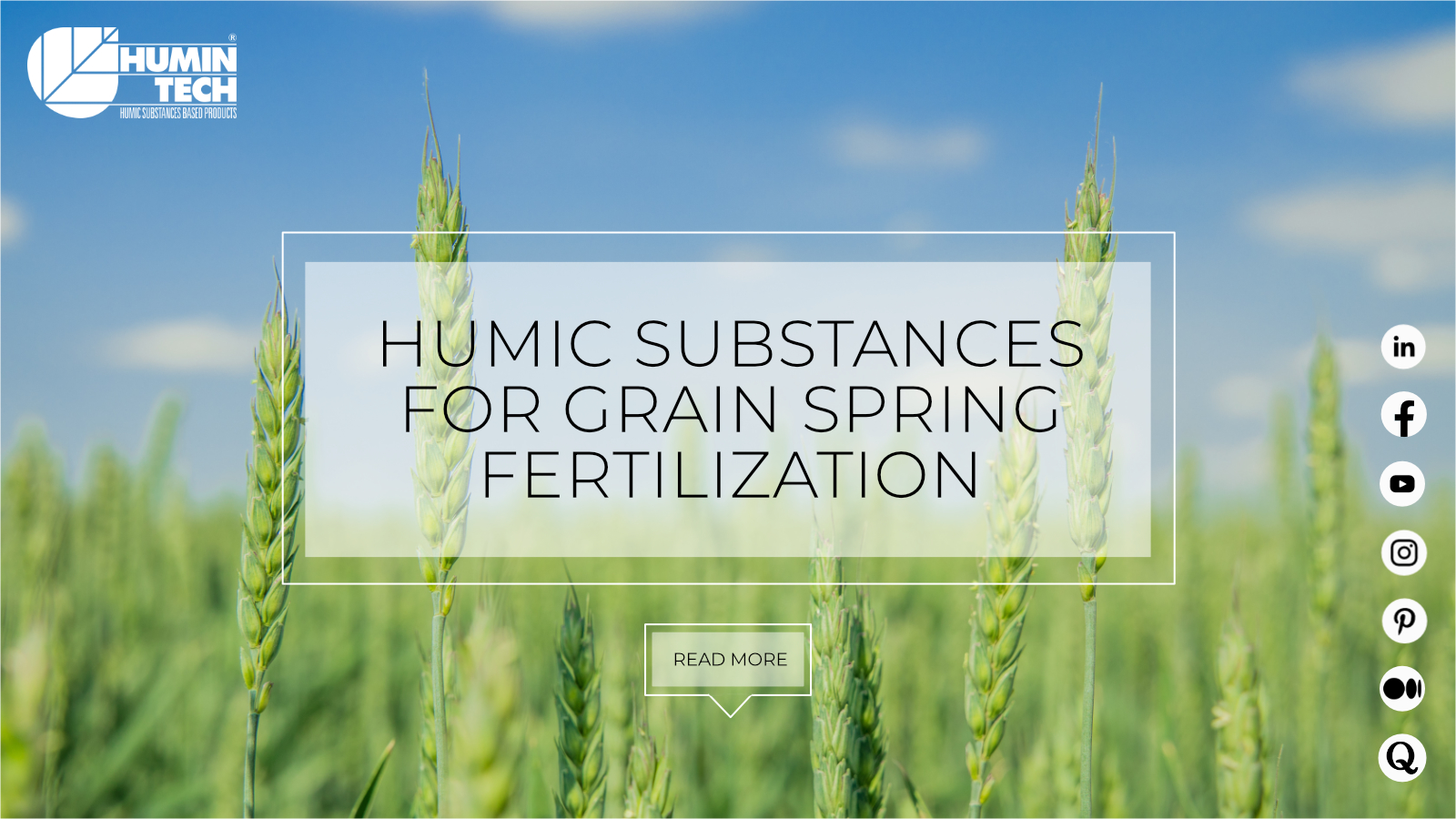Spring Fertilization in Cereal Crops – How can Nutrient Leaching be Prevented?

Spring Fertilization in Cereal Crops – How can Nutrient Leaching be Prevented?
The use of humic acids in spring fertilization
The winter cereals are growing and need to be fertilized on time. Whether spreaders or liquid fertilizers, biostimulants such as humic substances can be applied at the same time as the nutrients. But what are the advantages?
Whenever fertilizer is applied, the question arises: How to handle nitrogen best? The plant needs it urgently, but leaching into the groundwater must be avoided. The most effective ways to do this are targeted foliar fertilization and the buildup of humus in the soil. Humus creates a firm bond between nutrients and clay-humus complexes, so that nutrient losses are significantly reduced. Humic acids and fulvic acids keep the nitrogen available to plants and at the same time improve uptake in the rhizosphere through their stimulating effect.
When foliar fertilizing barley or wheat, trace elements like manganese, and micronutrients can be sprayed together with fulvic acid so that the nutrients will be chelated and thus more easily absorbed.
In spring, severe temperature differences can cause frost damage in cereals, but climate change has also frequently caused drought stress in the last years. In order to be prepared for abiotic stress, it is not only important to provide the plant with an optimal supply of nutrients: humus-rich, living soil has a high water storage capacity, supports root formation and growth, and doesn’t compact during heavy rainfall.
Biostimulants act not only as soil conditioners. They are also plant strengtheners that give resistance to frost and promote rapid growth in length.
Whenever fertilizer is applied, the question arises: How to handle nitrogen best? The plant needs it urgently, but leaching into the groundwater must be avoided. The most effective ways to do this are targeted foliar fertilization and the buildup of humus in the soil. Humus creates a firm bond between nutrients and clay-humus complexes, so that nutrient losses are significantly reduced. Humic acids and fulvic acids keep the nitrogen available to plants and at the same time improve uptake in the rhizosphere through their stimulating effect.
When foliar fertilizing barley or wheat, trace elements like manganese, and micronutrients can be sprayed together with fulvic acid so that the nutrients will be chelated and thus more easily absorbed.
In spring, severe temperature differences can cause frost damage in cereals, but climate change has also frequently caused drought stress in the last years. In order to be prepared for abiotic stress, it is not only important to provide the plant with an optimal supply of nutrients: humus-rich, living soil has a high water storage capacity, supports root formation and growth, and doesn’t compact during heavy rainfall.
Biostimulants act not only as soil conditioners. They are also plant strengtheners that give resistance to frost and promote rapid growth in length.
Suggestions for application of cereal fertilizers in the spring
For the first fertilization, a concentrated humic acid such as LIQHUMUS© can simply be sprayed on with the fertilizer. A product such as HUMICRAFT©, which contains amino acids in addition to humic substances, provides easily utilizable proteins as additional macronutrients to the crop. The humic substances have a long-term effect in the soil and plant.
The second and third fertilizer applications can be supplemented with FULVITAL© to increase the utilization of nutrients or supported by AMINOPOWER© Plus for additional stress resistance. Both products have been developed for foliar application.
After summer, to prepare for the coming crop, the economical HS-300BIO© is suitable, a highly concentrated humic preparation that stimulates soil life, optimizes pH and brings a stable crumb structure to the soil. This provides the field with the best protection against extreme weather, erosion and nutrient loss. HS-300BIO© prepares the ground for healthy plants that sprout and root faster and stronger, absorb and utilize fertilizer better, and are less susceptible to winter damage.
What are your experiences with humic substances in grain?
This article might also be interesting for you: How to Stop Desertification in Europe and Worldwide

